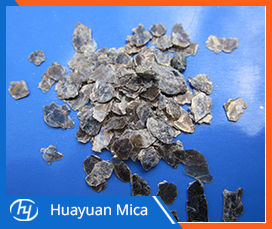As a Forest Green Granite Supplier, let's share with you the physical properties of mica. The physical properties of mica mainly depend on the size of mica crystals, the stripping properties determined by cleavage and hardness, and the color transparency and elasticity of mica. Industrial mica is mostly in the form of a plate or a book-like crystal, and the crystals vary in size from a few millimeters to several tens of centimeters. Generally, as long as the effective area of the crystal is greater than or equal to 4 cm, it has direct use-value. Of course, the larger the crystal area, the higher the value. The stripping performance of mica is determined by the cleavage and hardness of mica. Mica's unique crystal structure gives it a completely complete set of bottom cleavage, which is an important property of industrial mica technology processing and stripping.

In theory, Sericite Mica can be stripped to about 10, and phlogopite can be stripped to about 5-10. Therefore, muscovite and phlogopite can be stripped of flat sheets of any thickness according to industrial requirements to meet the mica of electrical and electronic industries. Requirements. The hardness of mica is low, the muscovite is 2-2.5, the magnesia-silica muscovite is 2.37, and the Phlogopite Mica is 2.78-2.85. The harder the mica is, the more difficult it is to strip. Muscovite and magnesium-silica muscovite have good stripping performance, and Phlogopite Mica is slightly worse. The color characteristics of mica are often used to characterize the insulating properties of mica. Industrial mica is generally preferred with light-colored Sericite Mica, followed by phlogopite, which has the worst insulation performance. Muscovite has a modulus of elasticity of 15346-21760 bar and phlogopite of 14500-19480 bar. When industrial mica is used as an insulating material, its elasticity is strictly required.